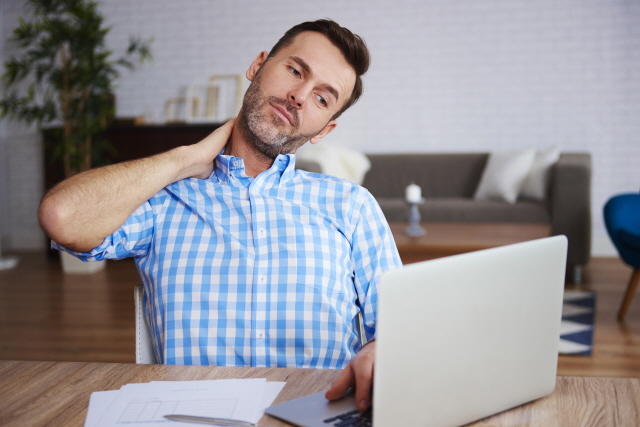
Release Muscle Tension Near GV21 and LI16
By Winston Lee L. Ac, Ph.D., KMD
As a physician, I treat patients with a variety of conditions, but I think one of the relatively easy ones to treat is the trapezius muscle problem. In the modern world, no one works without looking at a computer, and even if you don’t use a computer professionally, most people use smartphones and look at something intensely for a long time, which is much more common than before. This intense and prolonged staring at something causes the trapezius muscle to be overused, which makes it more prone to spasms. When this muscle spasms, it is common to experience pain in the area, as well as occipital, frontal, and temporal headaches, and even dry eyes.
Suppose a patient complains of neck stiffness and headaches for no particular reason. In that case, the first place to look is the trapezius muscle, especially the upper part. If this is treated properly, the patient will see immediate improvement, so acupuncturists need to know and master the anatomy and acupuncture treatment methods for this area.
The upper Trapezius muscle’s role is elevation and upward rotation of the scapula. Also, it does the Ipsilateral side bending of the neck and contralateral rotation and assists in the last movement. If pain occurs at the end of the c, we should suspect the upper trapezius trigger point. Trigger points of the upper trapezius muscle are near GV 21(called TP1) and LI 16(called TP2). TP1 should be punctured from front to back and TP2 from back to front. In the case of a TP1 near GV 21, this is where you can puncture the lungs if you go directly deep through the skin. Since the patient’s body shape and lung anatomy are different, if you want to put it vertically, you should do it as if you are only piercing the skin. If you want to stimulate it actively, hold the upper trapezius muscle with another hand and puncture it from back to front or front to back. It’s okay to go all the way through.
Teach the patient to do the following stretching at home as much as possible. From a straight back position, tilt the neck to one side and hold the head with the hand on the side you’re tilting. Stretch the opposite arm down and lower the shoulders as well. Focus more on lowering the opposite arm and shoulder than pulling the neck.
There’s something you should tell your patients when doing this type of treatment. This is because the area may be more painful or sore on the day of the treatment. It’s important to tell them that the day of the treatment may be more uncomfortable because it releases the spasm of the muscle fibers and that they will usually feel a significant improvement in pain the next morning. Patients who are new to acupuncture often do not have this knowledge, so they may complain that the spot hurts more immediately after the treatment, and this kind of patient education can help build trust in the practitioner.
































